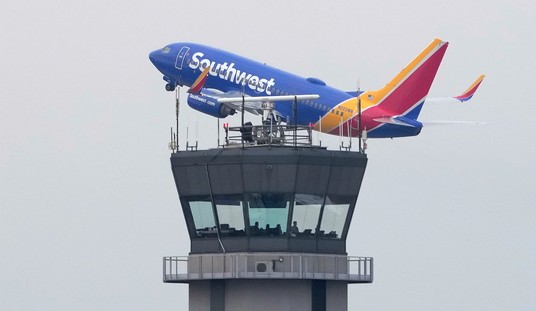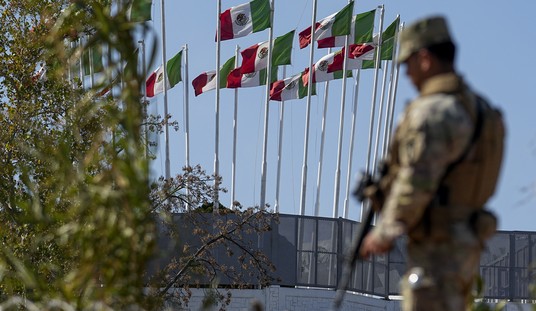One of the most influential Coronavirus models in the country, which has been specifically cited by top White House medical expert Dr. Deborah Birx as very relevant to the Trump administration's own expectations, has updated its projections to reflect new data. The adjustments have produced positive movement across multiple fronts -- from anticipated deaths, hospital bed shortages and peaks. We aren't out of the woods yet by any means, with President Trump and the Surgeon General both warning Americans to brace for a brutal week, but it looks like real progress is being made. Massive mitigation efforts are working:
Updated COVID-19 estimates find that need for hospital beds, ICU beds, and ventilators needed to deal with the COVID-19 epidemic are less than previously estimated. The revised forecasts reflect “a massive infusion of new data,” said Dr. Christopher Murray, Director of the Institute for Health Metrics and Evaluation (IHME) at the University of Washington’s School of Medicine...In addition, estimation of the likely peak of the epidemic in each state has been strengthened by epidemics peaking after social distancing in seven more locations internationally...IHME is predicting the need for approximately 25,000 ventilators over the next several weeks. Estimates of need for ventilators have primarily been revised downward because of the much larger datasets on US practice patterns for the caring of COVID-19 patients. Predicted excess demand for ICU beds has also been revised downward, with an estimated 16,323-bed shortage...Regarding deaths from the virus, the Institute’s previous general analysis still stands; however, the highest estimates are lower. IHME forecasts 81,766 deaths, with a range between 49,431 and 136,401. The estimated peak day, the modeling indicated, is April 16, with a projected 3,130 deaths nationwide on that day.
Overall US:
— Alicia Smith (@Alicia_Smith19) April 6, 2020
-# of deaths projected decreased from 93,531 to 81,766
-Projected total bed shortage went from 87,674 to 36,654
-Peak dates(April 15 for resource needed peak, 16th for peak daily death toll) unchanged
-Under 200 deaths a day: Moved from June 3 to May 18
Recommended
We know that Seattle's curve-flattening push has paid some dividends, and experts are now seeing important results in the country's biggest hotspot:
"The Coronavirus Epidemic Curve is Already Flattening in New York City" by MIT's Jeffrey E. Harrishttps://t.co/3OeQFY4KaE pic.twitter.com/OXVI50u5Ak
— Charles Fain Lehman (@CharlesFLehman) April 6, 2020
On this score, over the weekend, Allahpundit wrote an analysis based on the latest state-level numbers that New York may finally be turning a corner in its ugly fight against the pandemic. Within the piece, he evaluated the accuracy of the IHME model: "IHME’s forecast of the daily [New York] death toll has been quite accurate so far...[but] if you’re looking at hospitalizations instead of deaths, then IHME is way, way off." How off? "The current number of hospitalizations [in the state] is literally a quarter of the IHME forecast. That’s a big miss." That was before a huge amount of new data was plugged into the model. The result: As noted above, a relatively modest decrease in the upper bound of expected overall deaths, and a really big drop on projected hospital bed shortages.
Why? Theories range from anti-viral therapeutics (being used/tested on a fairly wide scale in New York) working well, to social distancing proving more effective than expected, to triage -- in which hospitals are "so overloaded right now that people who are struggling but not quite at death’s door are being sent home to recuperate even though they’d benefit from hospitalization if enough beds are available." Whatever the reason, the tide may be turning, nationally, in New York, and in a list of affected states. Remember, models giveth and taketh away; previously dire projections are now coming down, but bad new data could again raise alarms and force negative revisions. But for now, the arcs are starting to point in the correct direction. The same is true in hard-hit Italy and Spain. If things continue to develop in a hopeful direction, what's next? Dr. Scott Gottlieb, who recently outlined a smart roadmap to responsibly transitioning the US back to quasi-normal, says drugs that treat (but don't necessarily cure or prevent) Coronavirus will play a crucial role in the next phase:
The only way out is with technology. Aggressive surveillance and screening can help warn of new infection clusters that could turn into outbreaks, but that won’t be enough. A vaccine could beat the virus, but there won’t be one this year. The best near-term hope: an effective therapeutic drug. That would be transformative, and it’s plausible as soon as this summer. But the process will have to move faster. Americans would have the confidence to return to work, even if the virus is still circulating in the fall, if they knew that a robust screening system is in place to identify and arrest new outbreaks and medication can significantly reduce the chance of becoming severely ill...Given the enormous public-health and economic stakes, it is worth doing whatever it takes to move such a drug to market. There are two promising approaches, and both could be available soon if government and private industry do things right.
There are at least some promising signs in the anti-viral treatment lane, with antibody treatments also being worked on feverishly. What seems clear now is that the path ahead will feature a combination of curve flattening, broadly-effective drugs, and uber-widespread testing, to tide us over until a vaccine is developed and mass produced. Testing will include antibody screening, to determine who has recovered from the virus and built up an immunity to it (prime candidates to return to work, etc.), and preemptive/preventative testing. This Italian case study seems highly relevant:
In the last two weeks, a promising pilot study here has produced results that may be instructive for other countries trying to control coronavirus. Beginning on 6 March , along with researchers at the University of Padua and the Red Cross, we tested all residents of Vò, a town of 3,000 inhabitants near Venice – including those who did not have symptoms. This allowed us to quarantine people before they showed signs of infection and stop the further spread of coronavirus. In this way, we eradicated coronavirus in under 14 days. While we believe it is too late to enact this approach in a city such as Milan, where infections are out of control, there could still be time to do this [elsewhere] before the crisis gets even worse: the government could identify and isolate clusters, quarantine everyone affected, trace their recent contacts, and quarantine and isolate them, too – whether they had symptoms or not.
I've seen some people pointing to the models' improving picture and chalking it up to an exaggerated threat. I disagree. Experts have been trying to get their arms around a very real threat, which is a messy science; updating their projections based on real data is a sound method. But the biggest takeaway from these updates is that the draconian steps we've taken are succeeding and having a very meaningful impact. We've seen this replicated across the globe. For now, the best course is to maintain the guidance for the coming weeks, hopefully as the aforementioned mix of new mitigation strategies gets lined up by authorities. The health crisis is still far too acute, and our gains far too tentative, to rush toward a premature 'reopening.' What would be helpful, however, is a clearly-stated national plan that explains exactly what the benchmarks and goals will be. These commentaries generally have it right, in my view:
We need a plan for how we're going to reopen businesses across our city and country. Having a plan does not mean we're not taking Covid-19 seriously now. Having a plan is necessary, my Monday @nypost column: https://t.co/fWBF6FI5HU
— Karol Markowicz (@karol) April 6, 2020
.@jaketapper directly addresses Pres. Trump: “The American people ... need someone to explain what is going to be done to get us out of this. It’s a moment that requires leadership. It requires honest information. It requires empathy and it requires a plan. Do you have one?” pic.twitter.com/9tmWWjE3FH
— State of the Union (@CNNSotu) April 5, 2020
The White House should be developing a comprehensive, science-based battle plan, with input from smart economists and industry leaders, and communicate it to the public as soon as possible. Even if it needs to be tweaked along the way, and even if it's cautious and conservative, a set of specific goals, benchmarks and dates will provide hope and a tangible sense that the public's sacrifices and pain are worth it and non-permanent.
























Join the conversation as a VIP Member